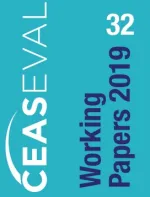Borders and the mobility of migrants in Turkey

CEASEVAL Working papers No. 32
This report investigates the functioning of the European Union’s internal and external borders in the governance of migrants’ mobility, by looking at the case of Turkey, a non-member country that is directly affected by and is affecting the bordering processes of migrants and refugees within the EU. The analysis within this report aims to shed light on how the borders and the mobility of migrants of different statuses (irregular migrants, asylum seekers and refugees) in Turkey are interacting and delves into the bordering processes of pre-entry to the European Union and to further mobilities towards the EU. The report starts by presenting the legal national framework for the bordering of asylum-seekers and refugees in Turkey, by providing an overview of the current national context, as well as the existing legislation on border passages and the admission of migrants. Second, it evaluates the institutionalized bordering practices performed by institutional actors. Third, the report assesses the lived experiences of migrants and asylum seekers regarding borders and bordering practices in the geo-political, legal, social and economic spaces and discusses how these experiences have an impact on their mobility and immobility within and beyond Turkey. The final chapter examines (1) how actual borders have been defined and managed, based on the insights provided by different institutional actors, and how they were encountered according to the testimonies of migrants and asylum seekers, and (2) how the bordering processes in the legal, social and economic spaces in Turkey have an impact on the mobility or immobility of migrants and asylum seekers. The discussion illustrates that there was strong connection between the bordering processes in geo-political, legal, social and economic spaces, and the availability or the conditions of mobility experienced by migrants and asylum seekers. The institutional, legal and administrative mechanisms regarding the management of borders, migration and asylum determined available options that individuals had on mobility, yet they were open to change over time. Moreover, the findings of the fieldwork also illustrate that despite these structural conditions that asserted certain limitations, there is room for migrant agency to seek alternative paths for mobility.
Keywords: borders, bordering processes, governance of mobility, Turkey, Turkey-EU relations